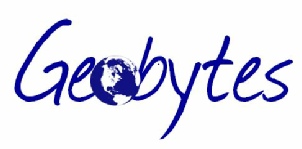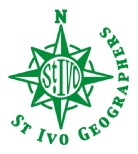


St Ivo Geography Department Online Portal
“Geography is the subject which holds the key to our future” -
Head of Department -


DAY 3 -
1. Dyrholaey
This morning we had the opportunity to experience Iceland’s amazing coastal geography. Our first stop this morning was to Dyrholaey, a small peninsula / headland on the south coast of Iceland. It is an island of volcanic origin surrounded by black sandy beaches. Dyrholaey is a huge naturally formed arch in the cliff which at 120 m high is so large that at certain tides ships can sail through it. The area is also rich in birdlife as we found out!. Other coastal features here include sea cliffs, arches, stacks and blow holes.
The black basalt has been worn into an arch 120 metres high (very popular as a sanctury for bird life!).
2. Reynisdranger
After our visit to Dyrholaey we continued down the coast to Reynisdranger, characterised by basalt sea stacks framed by a black sand beach. The area has distinctive basalt columns and other amazing rock formations, perfect of course for a few group photograph opportunities. Here we got our first view of puffins! There are believed to be between 8-
Our morning ended with lunch in the small fishing village of Vik with an opportunity to visit a souvenir shop and have a well deserved sit down!
3. Sólheimajökull
After lunch we made our way back along the coastline for a stop off at Sólheimajökull (also known as the “Black Glacier” due to the ash and moraines held within it). Sólheimajökull is a tributary glacier which extends from the Mýrdalsjökull ice cap which covers the Katla volcano. Sólheimajökull is also known as the ‘incredible shrinking glacier’ which has retreated by about a km over the last decade. The surface of the glacier is covered by crevases, ice ridges and streams run across the ice. In front of the glacier was a small proglacial lake with clear evidence of the retreating glacier with blocks of floating ice on it.
4. Skogafoss
Our next port of call was the stunning Skogafoss waterfall at a towering 62m high. The waterfall has formed due to the process of isostacy (the ground rebounding as ice sheets have melted). Icelandic legend has it that a settler named Prasi hid a chest of gold behind Skogafoss
5. Seljalandsfoss
Our next visit in our action packed day was to Seljalandsfoss waterfall, a 60m tall waterfall with the opportunity to walk behind the curtain of water! Since the last ice age -
At Dryholaey and Reynisdranger we saw many puffins. There are believed to be between 8-
Puffins are a popular game bird in Iceland and up until 2007 large numbers were hunted annually -
This waterfall also features in the Justin Bieber “I’ll Show you” video shot with a backdrop of stunning Icelandic landscapes. Student’s can see how many places they can recognise from today’s adventures!
6. The Lava Centre
Our final visit of the day was to the new Lava Centre museum in Hvolsvollur -